

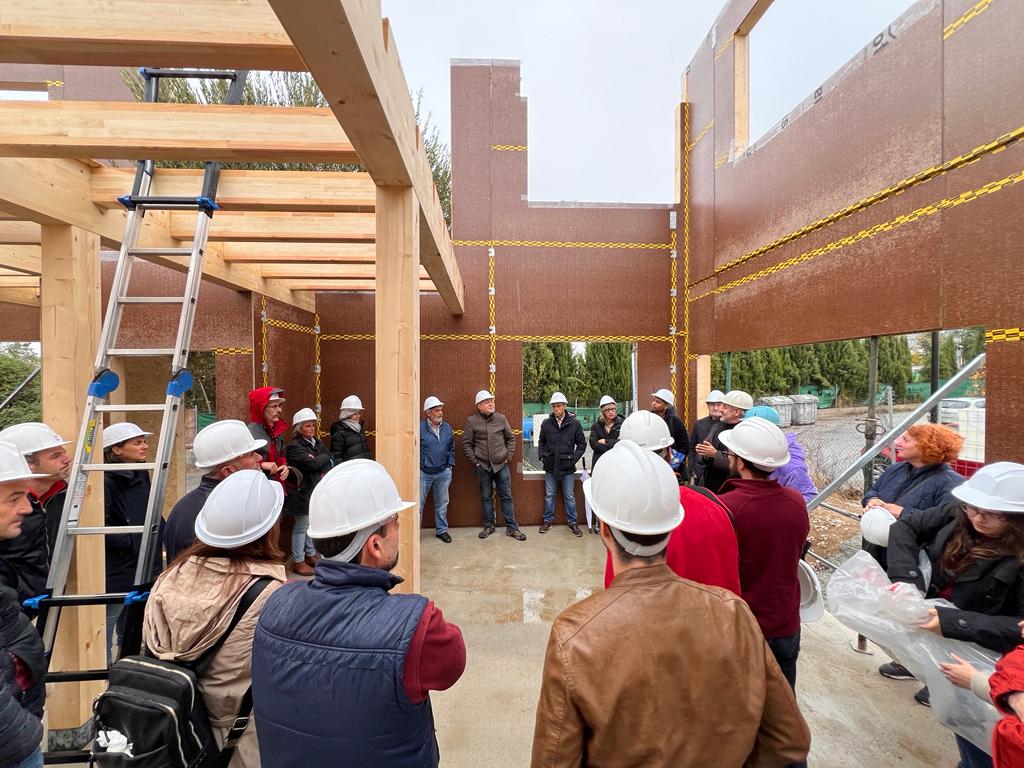

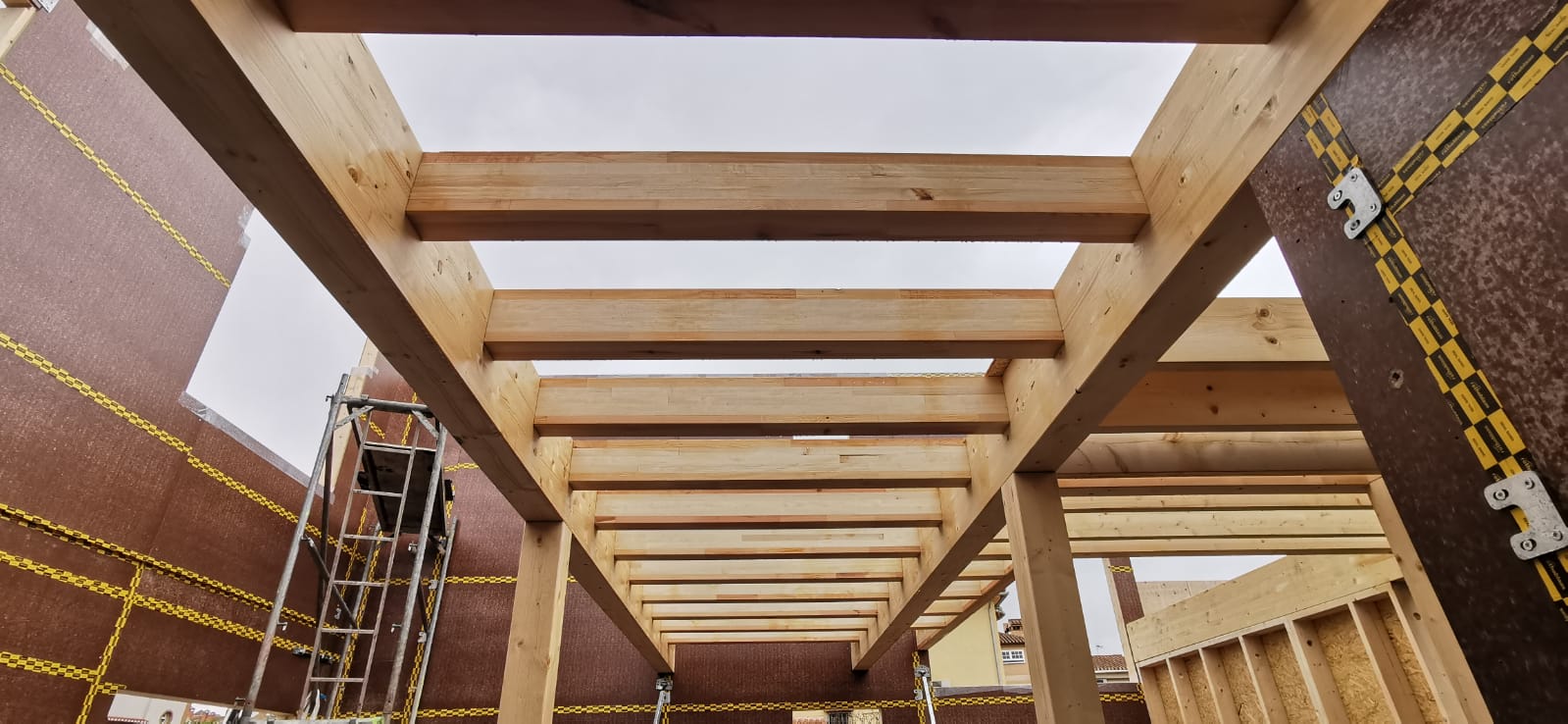

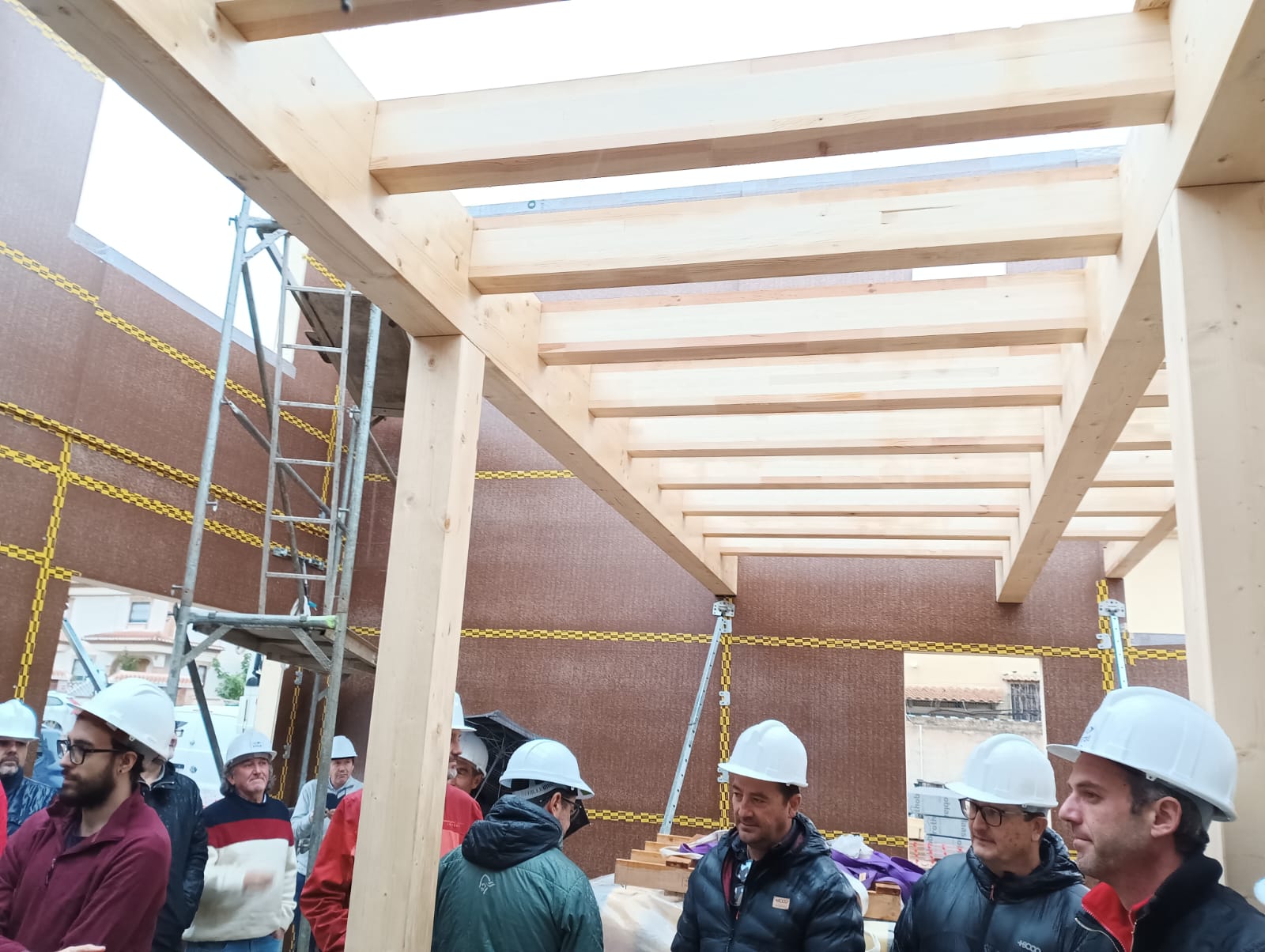
The pilot private house of the LIFE Wood for Future project incorporates laminated beams of poplar wood from the Vega de Granada and laricio pine from the Sierra de Cazorla designed by the UGR spinoff IberoLam Timber & Technology.
A family from Zaidín promotes this ecological and almost zero consumption house in which materials and thermal insulation allow energy savings of 80%.
Granada, December 4, 2023. A few days ago in Ogíjares began the assembly of the first house built in Spain with a laminated wood structure incorporating poplar wood. It is a project promoted by a family from Granada, designed by the local studio Bonsai Arquitectos and promoted as a pilot house by LIFE Wood for Future, a European project led by the University of Granada (UGR) that promotes the development of an Andalusian industry of sustainable construction with wood from this traditional species of the province of Granada.
The house, which will be built on an urban plot of 300 square meters, meets the Passivhaus standard (passive house, in German), which guarantees very low energy consumption and an almost zero carbon footprint thanks to its thermal insulation and air recirculation systems.
The floor slab of the second floor of the two-story house plus basement will be built with mixed laminated beams of poplar and laricio (MCLam), an innovative product transferred to IberoLam Timber & Technology, a spinoff of the UGR sponsored by LIFE Wood for Future and the seed of the first technical wood industry in Andalusia. The exterior and interior walls are made of coniferous wood.
The complexity of the project lies in the fact that, since there is still no specialized industry in Andalusia, the laminated beams have been calculated in the IberoLam spinoff in Granada, its parts, tested and manufactured in the laboratory of the Structural Wood Engineering Platform (Pemade) of the University of Santiago de Compostela (LIFE Wood for Future partner), and the final assembly, carried out by the Navarre company Madergia. In that sense, the coordinator of the LIFE project and professor at the School of Building Engineering, Antolino Gallego, explained that, once a proximity industry is developed in Andalusia, the whole process can be carried out here, reducing costs and the carbon footprint generated in transport.
“It will be the first house built with laminated wood incorporating poplar in Spain and, to our knowledge, the first in the world to use mixed laminated products of two species,” Gallego stressed. This joint use combines the advantages of both trees – the lightness and flexibility of poplar and the great strength and rigidity of laricio – which, moreover, are found in abundance in the most depopulated regions of the provinces of Jaén and Granada.
The architects Luis Llopis and Eva Chacón, in charge of the project, have emphasized that, although their initial objective was not to design a wooden house, when looking for construction alternatives to respond to the demand of the promoters of a Passivhaus house they found that, at similar costs, this material perfectly met the requirements of the Technical Building Code – in aspects such as anti-seismic and fire regulations – and the standards of an almost self-sufficient energy house, but, in addition, it did so in a much more sustainable way than steel and concrete.
Bonsai Arquitectos highlighted the advantages of prefabrication, which is based on parts “calculated to the millimeter and with a lot of precision work beforehand”, which saves a lot of time and uncertainty at the time of the work: the assembly will be completed in three weeks, out of a total of ten months.
Luis Llopis and Eva Chacón have been proud to contribute with this demonstration building to the development of a technical wood industry for building that can mean a huge boost for the Andalusian forestry sector, with what this implies for the use of a sustainable resource and the creation of jobs in the new highly technical professions associated with it.

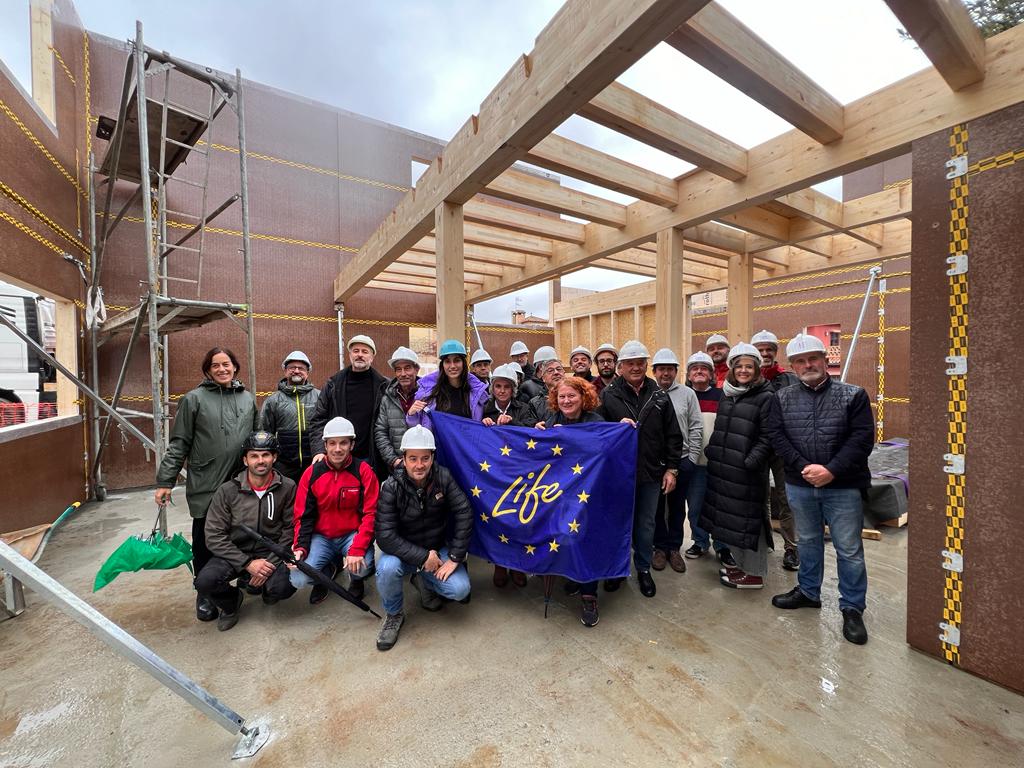
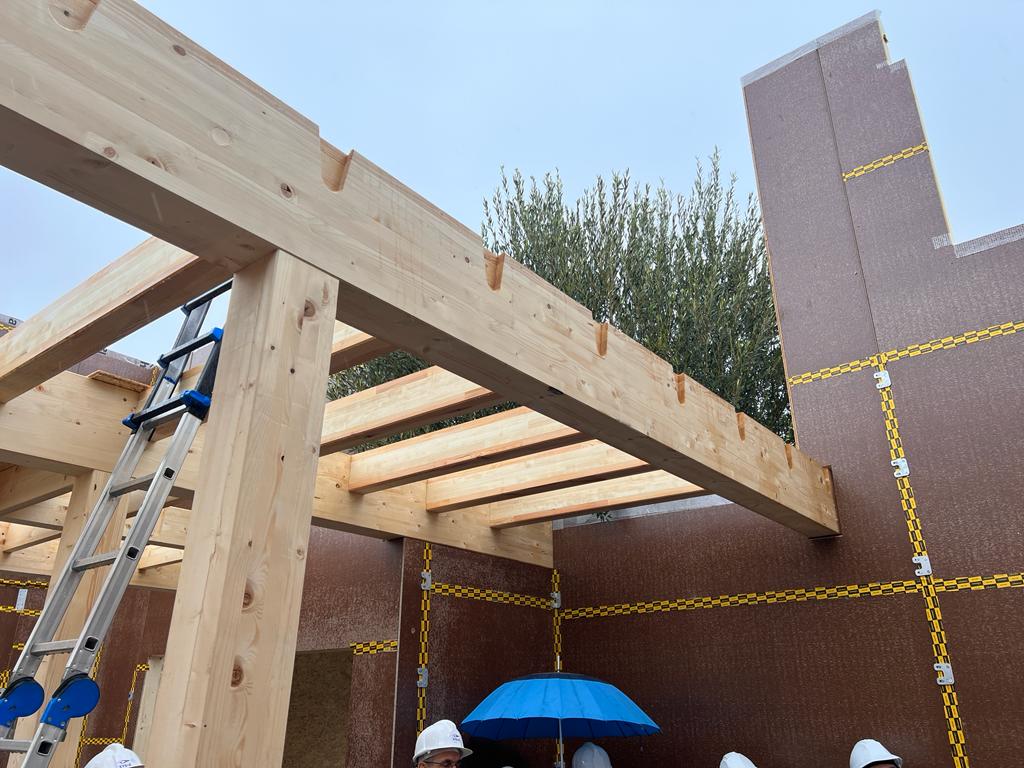
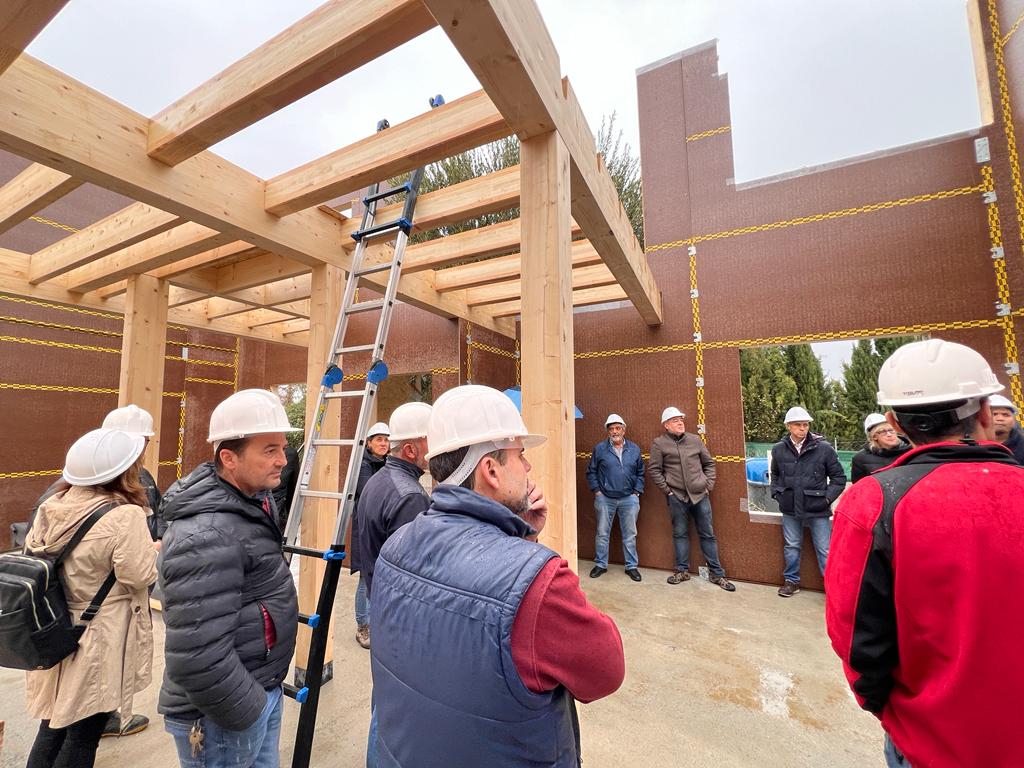
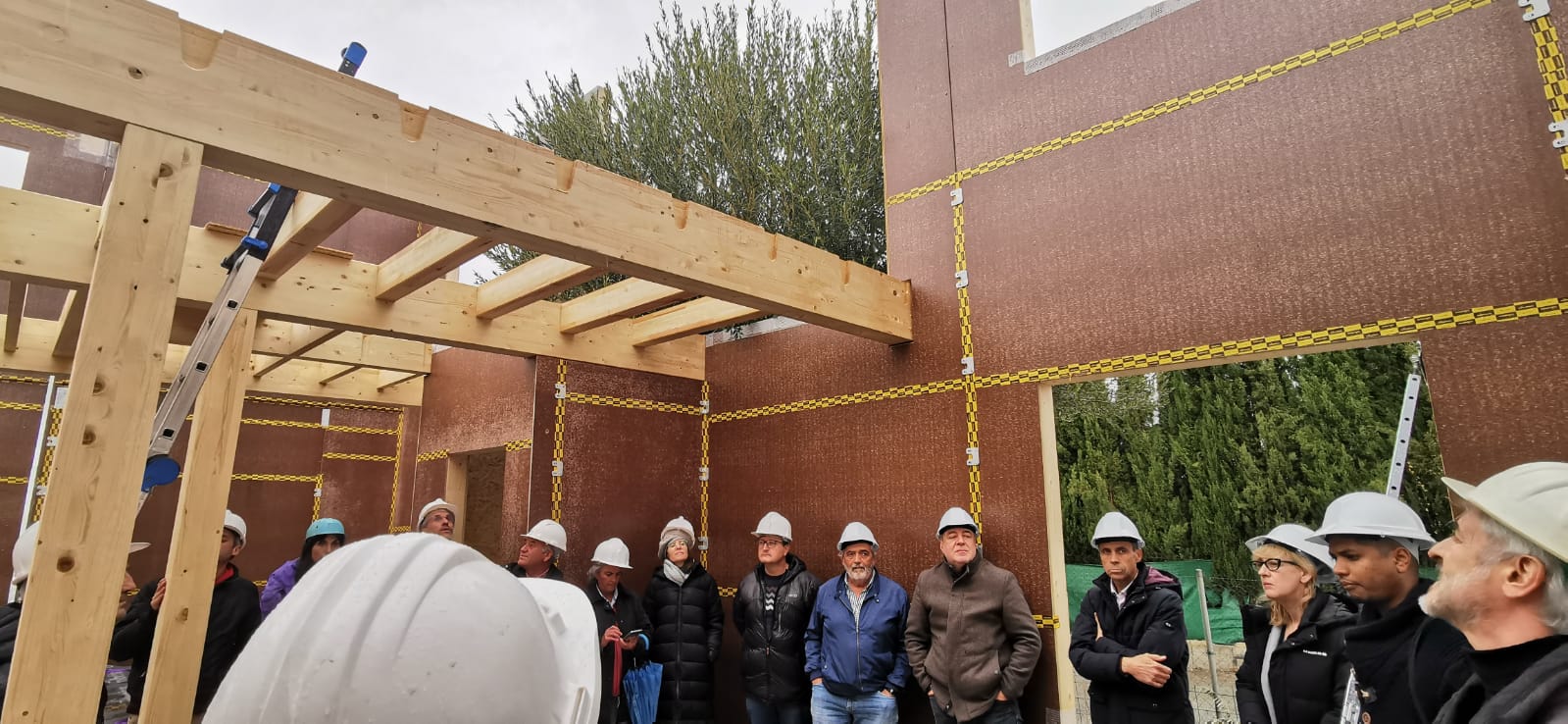
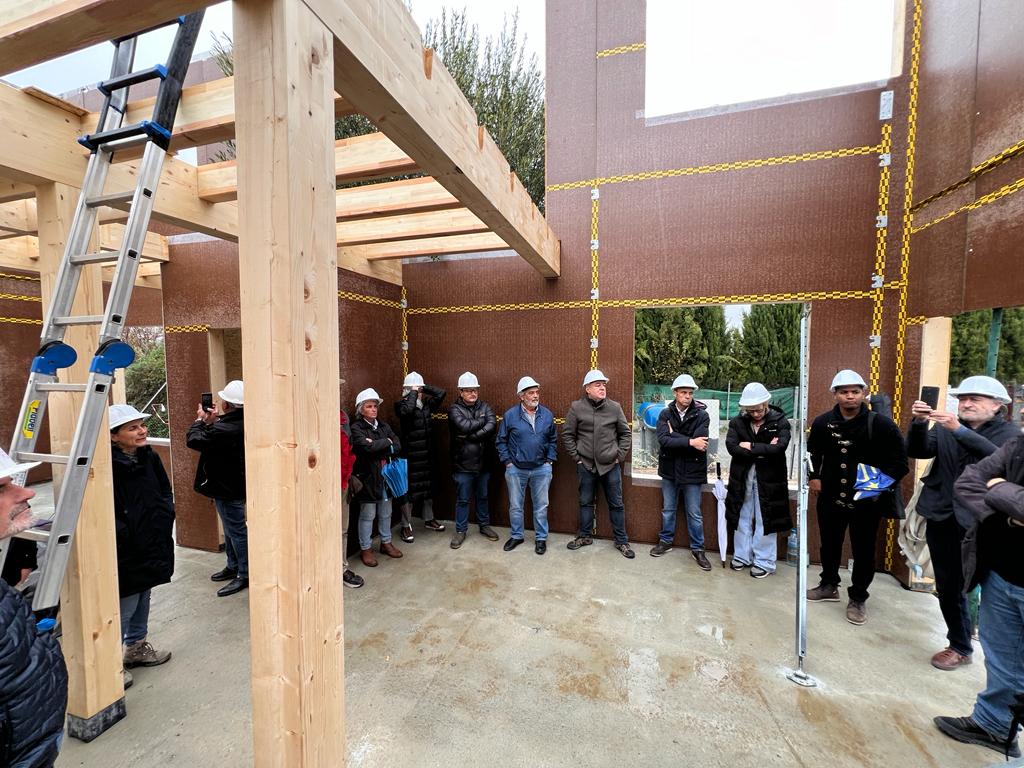
Belén Feijóo, architect and research support technician at the Pemade laboratory of the University of Santiago de Compostela, explained that the evaluation tests of the laminated beams carried out in her laboratory guarantee that these laboratory prototypes meet all the technical requirements for construction, since these mixed poplar-laricio beams have greater strength and stiffness than those of spruce, radiata pine or larch currently marketed in Europe. Feijóo stressed the importance of institutional support in the development of the industrialized sustainable construction sector in Galicia, because for society in general and specifiers (architects) in particular to appreciate the comfort, beauty and reliability of this material it is key to see wooden buildings already built. Examples of this support are the Impulso Verde building in Lugo or the recent decision of the Xunta de Galicia to require the use of structural wood in 20% of public works tenders.
This innovative pilot project has been possible thanks to the decisive participation of the Department of Sustainability, Environment and Blue Economy, which from the provincial delegation of Jaén and the Natural Park of Cazorla, Segura and Las Villas, has provided the laricio wood from the public forest of Navahondona. The cutting and removal of the wood was carried out by the students of the Training and Forestry Experimentation Center of the Junta de Andalucía in Vadillo Castril.
The Regional Ministry sees this support as an important preliminary step to enhance the value of Andalusian wood and generate a stable processing industry that creates employment and development from sustainable forest management, as it allows to evaluate the entire value chain forest-industry-construction. Proof of this support is the promotion by the Andalusian Housing and Rehabilitation Agency (AVRA) of a seven-story building of rental apartments for young people in La Azulejera (Granada), with a wooden structure and laminated poplar and pine beams.
For Juan Carlos Cano, the owner of the two hundred trees that were cut last year in Santa Fe and Fuente Vaqueros to build the beams, this home is a source of “pride”. “I have spent many, many years with the poplar tradition, with many problems, worrying about having the clones separated in the nurseries to be able to certify their strength and resistance, so this rewards me,” explains Cano. The also vice president of the Agrupación de Propietarios Marjal Chopo, of which more than 70 Andalusian foresters are part, mostly in Granada, is confident that sustainable construction will become a more profitable and stable outlet for this wood, which is currently dedicated mainly to the manufacture of boxes and packaging.
“We are a working family and we want an ecological house”.
Miguel Ángel García and Yolanda Requena, the promoters, are very satisfied with the project, despite the fact that at the beginning they did not know, as most people do, that modern houses could be built with a wooden structure. They have followed the process step by step, from the felling of the pine trees in the Sierra de Cazorla and the poplars in the Vega de Granada to the strength studies of the beams carried out in the Pemade laboratory. “At first we had doubts, but seeing that these beams are more resistant than the concrete ones changed us completely,” explains Miguel Ángel. On the outside, it will look like “a conventional house,” he stresses, and the wood will only be visible on the second floor slab from the living room and kitchen, where the poplar and laricio beams will be located.
“We are very excited about it. Part of my family is dedicated to agriculture in the Vega and they have grown poplars all their lives, but many have been disappearing. It’s a shame because they were a lung of oxygen, they produced the freshness that there was in Granada”, he recalls, confident that this type of project will help to reverse the situation and make poplar trees profitable again.
Originally from Zaidín, although with an “itinerant” biography, they are a working family that wants to have a house “as ecological and self-sufficient as possible”. According to their calculations, the savings in heating and cooling can be more than 80%.
The meeting will present the results of the LIFE Wood for the Future project, which ends in September of this year. . Representatives of forest owners from all the autonomous communities will meet at the Hotel Luna today and tomorrow.
The 26 photographs selected in the contest organized by the University and the Marjal Producers Association, together with a sound installation, are part of the exhibition at the Galería del Carmen of the Alhama Town Hall.
Organized by the University of Granada, through Medialab UGR of the Vice-Rectorate for Social Innovation, Employability and Entrepreneurship, in collaboration with Salvemos la Vega - Vega Educa and the City Council of Huétor Vega.
A study conducted by IFAPA proves the ability of this crop to take advantage of nitrates in its growth and prevent them from contaminating groundwater. The experiment is part of the LIFE Wood for the Future project, led by the University of Granada.
This web uses cookies
We use necessary and optional cookies to give you the best possible experience. Click accept to continue shopping or learn more about our cookie policy here.
You have already selected your cookie preferences in previous sessions. Do you want to modify them?
Obligatory cookies
They are those that allow the user to navigate through the web page, and use the different options or services that exist in it, such as, for example, identifying the session, accessing restricted access parts, carrying out the purchase process of an order or use security elements while browsing.
View the cookies we usePersonalization, analysis or functional cookies
They are those that allow the user to access the service with some predefined general characteristics based on a series of criteria in the user's terminal, such as the language, the type of browser through which the service is accessed, the regional configuration. from where you access the service, quantify the number of users and thus carry out the statistical measurement and analysis of the use that users make of the service offered. For this, your browsing on our website is analyzed in order to improve the offer of products or services that we offer you.
View the cookies we useAccept:
Advertising or informative cookies
They are those that allow us to manage our information in the most efficient way possible, adapting its content to the user's preferences, the type of terminal from which the service is accessed, the characteristics of the use made by the user of the services, offer you own or third party advertising, etc. To do this, we analyze your Internet browsing habits to offer you advertising related to the interests of your browsing profiles.
View the cookies we useAccept:
Analytics cookies
They are those that allow us to collect information on the use made of the website.
View the cookies we useAccept:

